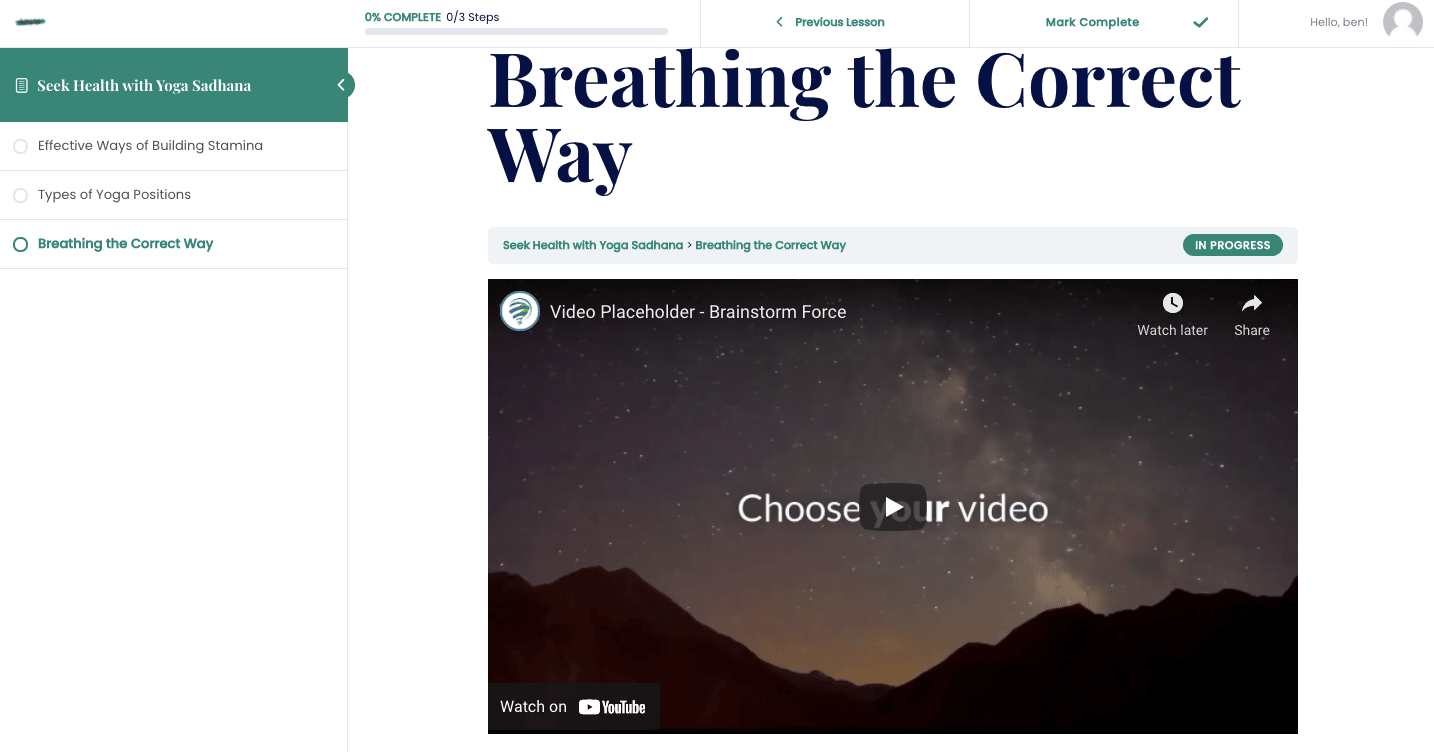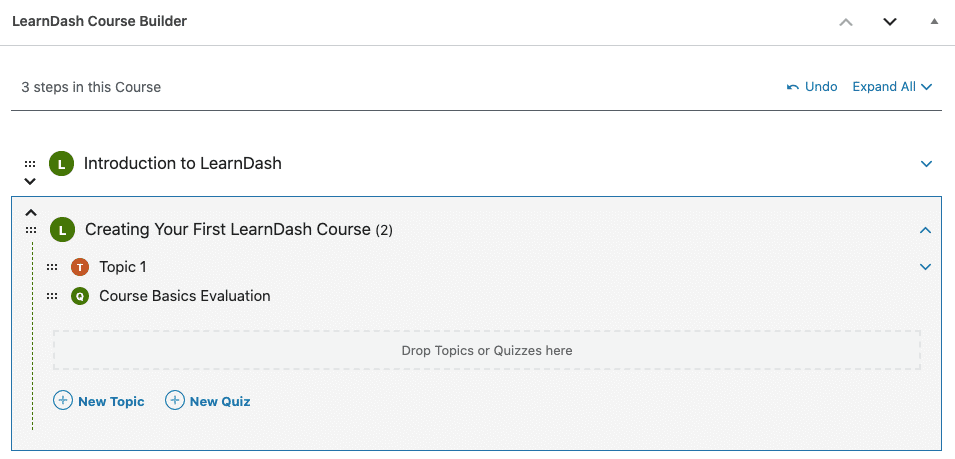Starting an online learning platform can be a tricky business – especially when the initial choice of which learning management system (LMS) to actually use for your site is often a difficult one.
For many online course creators, Moodle presents an ideal solution for their LMS needs. It’s a fully-fledged LMS with plenty of features right out of the box, and since it’s open-source, it’s highly customizable if you need additional features.
However, while Moodle may be a good all-in-one solution, it’s not necessarily the best option for everyone. Instead, many users opt for a WordPress-hosted LMS instead, building an online learning platform using the familiar, easy-to-use interface that WordPress is famed for.
So, which is right for you: a WordPress LMS vs Moodle? This guide will examine how each option stacks up in a variety of categories to help you make the right choice for your online courses.
What Is Moodle?
Before we compare WordPress LMS vs Moodle, let’s take a look at the basics of each platform. Moodle is an open-source learning management platform that’s commonly used by schools, universities, and other educational institutions to host courses and learning resources for their students. This popularity among larger educational organizations has also led many individual online course creators and businesses to adopt Moodle to host, manage, and share their own content.
Since Moodle is open-source, its code is openly available for site owners and developers to customize as they please. As such, Moodle can be extensively customized by creating custom plugins to expand the functionality of the site or change its appearance. Moodle is also available in both hosted and self-hosted versions, meaning you also have the option of how you want to host your online learning platform.
What Is A WordPress LMS?
A WordPress-hosted LMS does pretty much what it says on the tin: it’s an LMS that’s hosted via an existing WordPress site rather than as its own self-contained LMS. Unlike Moodle, WordPress LMS options aren’t fully-fledged learning management systems in their own right – they need to be connected to WordPress as a plugin to operate.
Specific LMS characteristics will come into play when looking at WordPress LMS vs Moodle. One of the most popular WordPress LMS platforms currently is LearnDash, which specializes in dynamic content delivery and has extensive options for content layering, micro-courses, online course gamification, and other features as a result.

LearnDash is also extremely easy to install, and can integrate with a wide range of other tools and platforms to add even further functionality. Thanks to its popularity and depth of features, we’ll be using LearnDash as the point of comparison for Moodle in this guide.
WordPress LMS vs Moodle: How Do They Compare?
Now that we’ve gone over some of the basic distinctions between each option, it’s time to see how Moodle and WordPress-hosted LMS solutions stack up in various categories so that you can choose the option that works best for you.
Built-In Features
One of the main things to look at when it comes to your LMS is what it can actually do, so to start with, let’s go over some of the functions and features that Moodle and LearnDash offer out of the box.
Moodle and LearnDash share a number of important features in common, such as asynchronous and synchronous learning options, gamification features, a learner portal, activity grading, and more. All of these are essential features for a successful LMS – so both options cover the most basic requirements without any need for customization.
However, each option does have their own niche in terms of exclusive features. Two of Moodle’s biggest extras are the capacity for video conferencing and a dedicated mobile app that users can access on the go.
LearnDash, meanwhile, offers a number of eCommerce features absent from Moodle. It provides support for a number of pricing models (such as one-off payments, bundles, and subscriptions), renewal reminders, and in-built support for PayPal, Stripe, and 2Checkout payment gateways as standard. What’s more, when paired with the popular WooCommerce plugin for WordPress, LearnDash can use over 300 other payment options too.
This focus on eCommerce means that LearnDash offers far more functionality than Moodle for those aiming to sell online courses without needing to add plugins or customizations, so it can make for a good option if you want to get started selling courses quickly.
Ease Of Use & Required Expertise
Another important factor is how easy your LMS is to use for course creation and management, as well as how easy it is to manage the more technical aspects of your site.
Moodle has an intuitive UI and offers plenty of guides and tutorials to help first-time users get to grips with its systems. Moreover, its in-built course creation tools are also relatively easy to get to grips with, meaning you can quickly start to create and organize your course content without needing too much practice.
However, Moodle is slightly limited in terms of ready-made options for changing the appearance or functionality of your site, meaning you’ll either need to find plugins and extensions that make the changes you want to see. Alternatively, you can make these changes yourself if you have some coding experience, but Moodle isn’t always the easiest platform to code for, especially if you’re a beginner.
LearnDash also offers an intuitive design and UI, making it fairly easy to get to grips with for beginners. Thanks to its huge community of developers and supporters, there are also all manner of walkthroughs, video guides, and discussion forums for you to find some extra support if needed.
In terms of content creation, LearnDash is also easy to use – its drag-and-drop course builder is a simple and effective way to build your courses. More importantly, since LearnDash is built on WordPress, users can enjoy the benefits of WordPress as an easy and effective content management system, making it even easier to design lessons, courses, and other content.

The other advantage of using a WordPress-hosted option is that WordPress has a famously simple-to-understand backend UI, which is renowned for its ease of use. Hosting your LMS via WordPress also means that customizations are easy to add via plugins, extensions and LearnDash add-ons without needing any coding expertise yourself.
Customization
Speaking of customizations, these are another important factor that online course creators should consider when looking into a WordPress LMS vs Moodle. Since both Moodle and LearnDash are open-source, they both offer effectively unlimited customization in theory. In practice, however, there are some important distinctions in terms of how easy customizations are to implement.
Moodle comes with a few preset themes that dictate its overall appearance, allowing you to quickly change the basic layout and design of your site. There are also various themes available to install or buy from Moodle developers around the internet. Otherwise, you can try to customize your site’s design yourself through making changes to the platform’s code or by hiring a developer to do it for you.
The same goes for adding or modifying features. While there are some Moodle plugins available, if you can’t find what you need you’ll need to code it yourself or pay a developer to make a custom plugin for you.
LearnDash works with many free and premium WordPress themes, which can be easily customized to give your site a totally unique look. The same goes for enhancing your site with additional features or tailoring the platform’s functionality. You can easily access LearnDash add-ons, which allow you to add different features to your site such as a student chat box, verifiable course certificates, course reviews, and more! If you have something specific in mind, you can also get a LearnDash expert to customize LearnDash for you.
However, LearnDash has one advantage that Moodle doesn’t – and again, it’s because it’s hosted on WordPress. WordPress has an absolutely huge community of developers and users supporting it, meaning that there are far, far more options in terms of plugins, LearnDash themes, and customizations available for LearnDash than for Moodle.
Pricing
Pricing is another important factor to consider for your LMS, especially if you’re running on a tight budget. Moodle is the immediately obvious winner for this category since it’s free to use, while LearnDash’s Basic plan costs $199 per year (with more expensive tiers allowing you to add LearnDash to multiple sites).
However, this isn’t the full picture. Hosting costs, setup and development fees, and plugin purchases can all increase the overall price of your LMS. Moodle offers hosted plans starting at $110, while self-hosting costs can vary hugely depending on your needs.
For LearnDash, users will need to pay for the Business ($25/month) or eCommerce ($45/month) WordPress hosting tiers to be able to install LearnDash and other plugins, although third-party hosting costs may differ.
For both sites, plugin costs can vary wildly. Many plugins are free, but paid plugins can cost anywhere between a few dollars and several hundred dollars, either as one-off payments or annual subscriptions. This is one area of pricing where LearnDash has the advantage, however – since there are more plugins available, you have more choice in terms of different price points for similar plugin options.
Scalability
If you want your online course business to grow, then your LMS needs to be able to grow with it. As such, when looking at WordPress LMS vs Moodle, you must consider which LMS offers effective scalability that can support increasing numbers of users and courses.
Moodle’s scalability is highly debated – some developers claim that the LMS can easily scale from a few hundred users to over 10,000, while others claim that it’s not built to withstand such high usage. In reality, it largely depends on how well-built your Moodle site is and how reliable your web host is. As such, it can pay off massively to invest in hiring a professional developer to design your Moodle site with scalability in mind.
LearnDash, meanwhile, is naturally highly scalable by virtue of being hosted on WordPress, which as a platform is extremely scalable in and of itself. WordPress is extremely easy to use as a content management system, and its intuitive backend makes it easy to add features as necessary if you start needing extra functionality.
What’s more, all of LearnDash’s plans come with unlimited users and courses, so there are no restrictions placed by which price plan you opt for.
WordPress LMS vs Moodle: The Final Verdict
Overall, Moodle and LearnDash have a variety of advantages and disadvantages compared to one another that make them more suited to certain types of users.
Moodle is a more complete package out of the box since it’s designed as an all-in-one LMS solution, meaning there’s less setup needed to get everything running as you want it to. It’s also free, which makes it an ideal option for online course creators on a limited budget, especially if you don’t plan to add many plugins or customizations.
LearnDash, on the other hand, is extremely adaptable and has much wider support for customizations and development than Moodle, largely due to being hosted on WordPress. It’s also the clear winner in terms of in-built eCommerce features, so it’s ideal for those who want to start selling their online courses quickly and effectively without having to invest in multiple plugins and customizations. And if you do need any extra support to build a LearnDash site or customize LearnDash to fit your specific requirements, WooNinjas are happy to help!
If you are currently using Moodle and thinking about transitioning to a WordPress-hosted site, reach out to our LMS experts to learn more about our LearnDash to Moodle migration services and take the stress out of the migration process!


